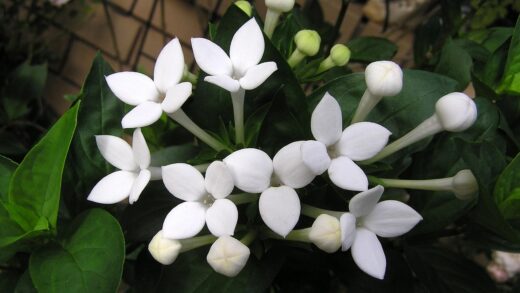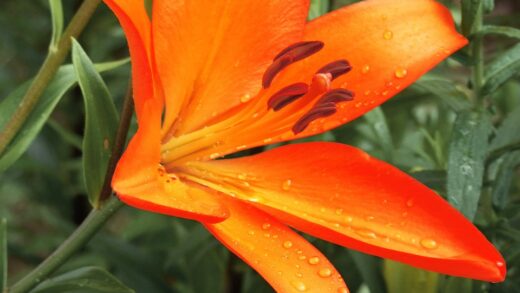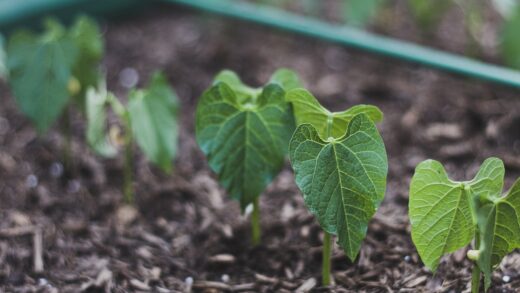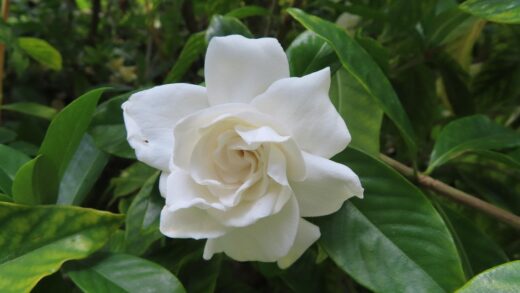The Balkan squill, a delightful bulbous perennial, brings a touch of vibrant blue to gardens in the late spring. To ensure its success and a profusion of its star-shaped flowers, a thoughtful approach to its overall care is essential. This involves understanding its native habitat in the Balkan meadows and translating those conditions into a garden setting. Proper care extends beyond simple watering and feeding; it encompasses a holistic view of the plant’s life cycle, from its emergence in spring to its dormancy in winter. Providing the right environment will not only result in a beautiful display but also encourage the plant to naturalize and spread, creating a stunning carpet of blue over the years.
At the heart of successful cultivation lies the mimicry of its natural environment. These plants thrive in conditions that replicate the moist, yet well-drained soils of their native grasslands. They are not overly demanding, but they do have specific preferences that, when met, lead to robust growth and prolific flowering. It is a common misconception that because they are small, they require minimal attention. In reality, consistent care, especially during their active growth and flowering period, is crucial for their long-term health and vitality. This means paying close attention to the soil composition, the amount of sunlight they receive, and the moisture levels throughout the year.
The life cycle of the Balkan squill dictates the timing and nature of the care it requires. In early spring, as the first shoots emerge, the plant begins a period of rapid growth, drawing on the energy stored in its bulb. This is a critical time for ensuring adequate moisture and nutrients are available. Following the spectacular floral display, the foliage plays a vital role in photosynthesis, replenishing the bulb’s energy reserves for the following year. Therefore, it is imperative to allow the leaves to die back naturally, resisting the urge to tidy up prematurely.
Once the foliage has withered and the plant enters dormancy in the summer, its care requirements change significantly. During this period, the plant is at rest, and excessive moisture can be detrimental, leading to bulb rot. The focus of care shifts from active support to providing the right conditions for this dormant phase. A dry, warm summer allows the bulbs to mature and prepare for the next growth cycle. Understanding and respecting this natural rhythm is the cornerstone of successful, long-term care for the Balkan squill, ensuring its return year after year with an ever-increasing display of color.
The importance of soil selection
The foundation for a thriving colony of Balkan squill is unquestionably the soil in which it is planted. These bulbs have a distinct preference for soil that is both moisture-retentive and exceptionally well-draining. A loamy soil, rich in organic matter, typically provides the ideal balance, allowing roots to access necessary moisture without becoming waterlogged. Heavy clay soils, which tend to retain excessive water, especially during winter, pose a significant risk of bulb rot, a common reason for failure. Conversely, overly sandy soils may drain too quickly, preventing the bulbs from absorbing sufficient moisture during their critical growth phase.
More articles on this topic
To achieve the perfect soil structure, amendments are often necessary. If you are working with heavy clay, incorporating generous amounts of grit, perlite, or well-rotted compost can dramatically improve its drainage and aeration. This creates small air pockets within the soil, preventing compaction and allowing water to move more freely. For sandy soils, the addition of organic matter such as leaf mold, coir, or compost is key to enhancing its water-holding capacity. These materials act like a sponge, holding moisture and nutrients near the bulb’s root zone where they are most needed.
The pH of the soil is another critical factor to consider for the optimal health of the Balkan squill. These plants generally prefer a neutral to slightly alkaline soil pH, typically in the range of 6.5 to 7.5. It is always a good practice to test your soil’s pH before planting to determine if any adjustments are needed. If your soil is too acidic, you can amend it by adding garden lime or wood ash. This not only adjusts the pH but can also provide a valuable source of calcium and potassium, which are beneficial for bulb development and overall plant vigor.
Furthermore, the long-term health of the soil is paramount for the perennial nature of these bulbs. It is not enough to simply prepare the soil at the time of planting. Regular top-dressing with a layer of compost or leaf mold in the autumn will help to maintain the soil’s fertility and structure over time. This slow-release source of nutrients will be available to the plants when they emerge in the spring, and the organic matter will continue to improve the soil’s drainage and moisture retention, creating a sustainable and nurturing environment for your Balkan squill to flourish for years to come.
Sunlight and location considerations
Choosing the right location is as crucial as preparing the soil for the Balkan squill. These plants perform best in a position that receives full sun to partial shade. The ideal scenario is a spot that gets plenty of direct sunlight in the spring when the plants are in full growth and flower. This exposure to sunlight is vital for photosynthesis, the process through which the plant creates the energy it needs to produce a spectacular floral display and, just as importantly, to store sufficient food in its bulb for the following season’s growth. Without adequate spring sunlight, flowering may be sparse, and the bulbs may fail to thrive.
More articles on this topic
A location under deciduous trees can provide the perfect balance of light and shade throughout the year. In the spring, before the trees have fully leafed out, the squill will receive the direct sunlight it craves. As summer approaches and the canopy fills in, the trees will provide dappled shade, protecting the plants from the intense midday sun and helping to keep the soil cool and moist as the bulbs enter their dormant period. This mimics their natural woodland edge and meadow habitats, creating an environment where they feel right at home.
When selecting a site, also consider the plant’s ultimate size and spreading habit. The Balkan squill is a relatively small plant, typically reaching a height of only 15-20 centimeters, but it has a tendency to naturalize and form extensive colonies over time. Therefore, it is well-suited for planting in rock gardens, at the front of borders, or in drifts through a lawn. When planting in a lawn, it is important to choose an area where the grass will not be mown until the squill’s foliage has completely died back, which is usually by early summer.
Finally, think about the visual impact and companion planting possibilities. The intense amethyst-blue flowers of the Balkan squill create a stunning visual effect, especially when planted in large groups. They combine beautifully with other spring-flowering bulbs such as crocuses, daffodils, and early tulips. Planting them alongside plants with contrasting foliage, such as the silvery leaves of Stachys byzantina or the dark foliage of Heuchera varieties, can create a dynamic and long-lasting display in the garden. Careful consideration of the location will ensure not only the health of your plants but also a visually pleasing garden design.
Post-flowering care
The period immediately following the bloom of the Balkan squill is a critical phase in its annual life cycle, and the care provided during this time directly impacts the quality of the following year’s display. Once the vibrant blue flowers have faded, the plant’s energy is redirected towards its foliage. These strap-like leaves are not just for show; they function as the plant’s powerhouses, capturing sunlight and converting it into energy through photosynthesis. This energy is then transferred down to the bulb and stored, providing the fuel needed for survival during dormancy and for initiating growth the next spring.
It is absolutely essential to resist the temptation to cut back or tidy up the foliage after flowering has finished. While the leaves may start to look a bit untidy as they begin to yellow and wither, they are performing a vital function. Removing them prematurely would be akin to unplugging a charging battery before it is full; the bulb will be left depleted of the energy reserves it needs. Allow the foliage to die back completely and naturally, which can take several weeks. Only once the leaves have turned entirely yellow or brown and have detached easily from the base should they be removed.
During this post-flowering period, it is also important to maintain adequate soil moisture, but avoid overwatering. The roots are still active, absorbing water and nutrients to support the foliage and replenish the bulb. A dry spell immediately after flowering can stress the plant and hinder the energy storage process. However, as the foliage begins to yellow and the plant signals its transition into dormancy, watering should be gradually reduced. This helps to prepare the bulb for its summer rest and reduces the risk of rot setting in.
This is also an opportune moment to apply a final, light feed to the plants. A balanced, low-nitrogen fertilizer, such as a liquid seaweed feed or a specific bulb fertilizer, can give the plants a final boost. The nutrients will be taken up and stored in the bulb along with the energy from photosynthesis. This final act of care before dormancy ensures the bulbs are as well-provisioned as possible, setting the stage for a robust and spectacular floral display when they reawaken the following spring.
Managing dormancy and winter preparation
As summer progresses, the Balkan squill enters a period of dormancy, a natural state of rest that is crucial for its survival and future growth. During this time, the foliage will have completely withered away, and all the plant’s energy will be concentrated within the underground bulb. The primary goal of care during this phase is to provide an environment that mimics the dry, warm conditions of its native summer habitat. This means that irrigation should be ceased almost entirely for established plantings. Excessive moisture in the soil during dormancy is the single biggest threat, as it can easily lead to bulb rot and the complete loss of the plant.
For Balkan squill planted in borders or rockeries with good drainage, this dormant period requires very little intervention. The surrounding plants and the natural summer climate will typically provide the necessary conditions. However, if they are planted in an area that receives regular summer irrigation for other plants, it may be prudent to provide some form of protection. A simple solution can be to temporarily cover the area with a piece of slate or a small cloche to deflect the water from automatic sprinkler systems or heavy summer downpours, ensuring the soil around the bulbs remains relatively dry.
As autumn approaches, preparation for the coming winter begins. A key task is to ensure the planting area is clear of weeds and debris. This not only improves the aesthetics of the garden but also removes potential hiding spots for pests and reduces competition for resources when the squill emerges in the spring. Applying a layer of mulch is highly beneficial at this time. A 2-3 centimeter layer of well-rotted leaf mold, compost, or fine bark chippings will help to insulate the bulbs from extreme winter cold and fluctuating temperatures.
This autumn mulch serves multiple purposes beyond just insulation. As it gradually breaks down over the winter, it will enrich the soil with valuable organic matter and nutrients, which will be readily available to the bulbs when they break dormancy in the spring. It also helps to suppress weed growth in the early spring, giving the squill a clean start. This simple act of autumn mulching is a vital step in preparing your Balkan squill for the winter, ensuring their survival through the cold months and setting them up for a vigorous return in the spring.
Division and rejuvenation
Over time, colonies of Balkan squill will naturally expand, with the parent bulbs producing offsets and creating dense clumps. While this naturalization is often a desired effect, creating a carpet of blue, the clumps can eventually become overcrowded. When this happens, the plants begin to compete with each other for essential resources such as water, nutrients, and light. This can lead to a noticeable decline in vigor and a reduction in the size and number of flowers produced. To maintain the health and flowering performance of your plants, periodic division is necessary.
The best time to divide Balkan squill is in late summer or early autumn, after the foliage has completely died back and the bulbs are fully dormant. This timing allows the newly divided bulbs sufficient time to establish a new root system before the onset of winter. Attempting to divide them while they are in active growth or flower can cause significant stress to the plants and may hinder their ability to flower the following year. The dormant period provides a window of opportunity to lift and separate the bulbs with minimal disruption to their life cycle.
The process of division is straightforward. Carefully lift the entire clump from the ground using a garden fork, taking care to dig wide and deep enough to avoid damaging the bulbs. Once the clump is lifted, gently shake off the excess soil to expose the individual bulbs. You will find that the bulbs can be easily separated from the main clump by hand. Discard any bulbs that appear soft, damaged, or show signs of disease, and select only the healthy, firm bulbs for replanting.
Replant the divided bulbs immediately to prevent them from drying out. They should be planted at the same depth as they were previously growing, which is typically about 5-8 centimeters deep. Space the bulbs at least 5-7 centimeters apart to give them ample room to grow and multiply in the coming years. This process of division not only rejuvenates the original clump, ensuring continued vigorous flowering, but it also provides you with new plants to expand your collection or to plant in other areas of the garden, spreading the beauty of the Balkan squill.


















